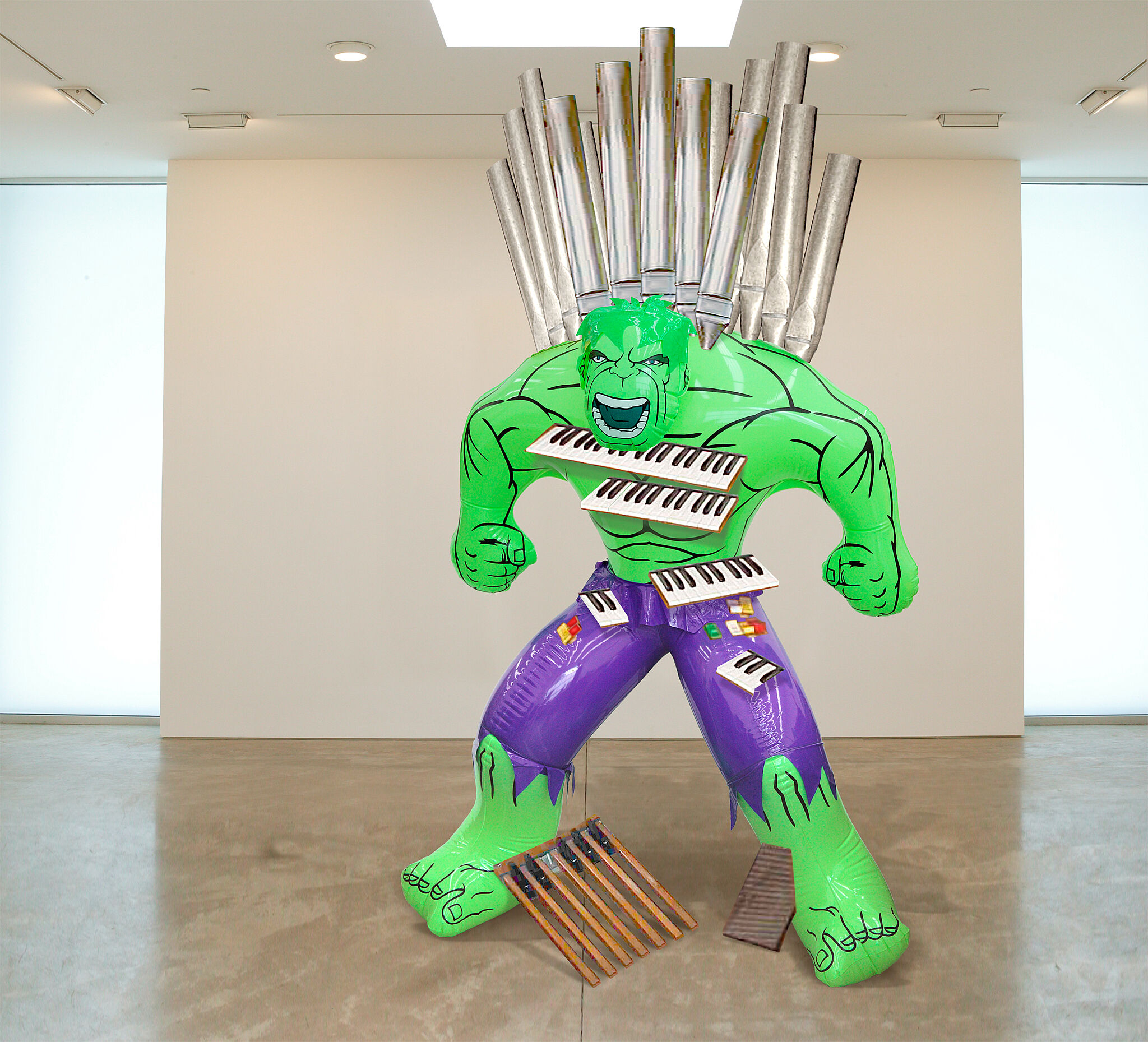Jeff Koons: A Retrospective | Art & Artists
June 27–Oct 19, 2014
Jeff Koons: A Retrospective | Art & Artists
Hulk Elvis
12
With Hulk Elvis, Koons extended and complicated his renewed interest in the readymade, employing cutting-edge technologies to further blur the distinction between real things and their copies. To create the sculptures in this series, Koons has pioneered methods for capturing source data and fabricating objects that rival the most advanced capabilities of science and manufacturing. This exactitude contributes to the “strong, heroic” quality Koons sought in Hulk Elvis (which takes its name from the cartoon antihero and the virile pop star). The layered compositions of Koons’s canvases—with a grinning monkey, an erotic scene from a Japanese print, and a linear depiction of a horse-drawn carriage confronting a train—suggest sexual union, the clash of opposing worlds, permanence and evanescence, and a sense of power and confidence made all the more compelling by the threat of obsolescence and deflation.
Hulk (Organ), 2004–14
Hulk (Organ) conjoins an Incredible Hulk inflatable toy machined in bronze and a functioning organ. The exaggerated masculinity of the Hulk is one of the key themes of the Hulk Elvis series, and for Koons the figure represents “both Western and Eastern culture and the sense of a guardian, a protector.” The organ is itself a masculine symbol, not only because of its explosive phallic pipes, but also because it is known as the “king of instruments,” a reference to its complex and, often, overwhelming sound. In fact, when the organ is played, this sculpture emits a deafening, belligerent sound akin to a race car engine. The concentration and accumulation of these references make the sculpture a paragon—and perhaps also parody—of machismo.

